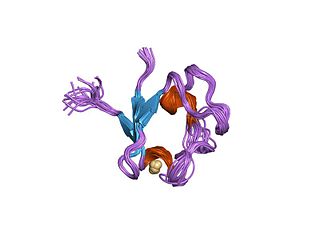| 2,5-diketocamphane 1,2-monooxygenase | |||||||||
|---|---|---|---|---|---|---|---|---|---|
| Identifiers | |||||||||
| EC no. | 1.14.14.108 | ||||||||
| Databases | |||||||||
| IntEnz | IntEnz view | ||||||||
| BRENDA | BRENDA entry | ||||||||
| ExPASy | NiceZyme view | ||||||||
| KEGG | KEGG entry | ||||||||
| MetaCyc | metabolic pathway | ||||||||
| PRIAM | profile | ||||||||
| PDB structures | RCSB PDB PDBe PDBsum | ||||||||
| |||||||||
2,5-diketocamphane 1,2-monooxygenase (EC 1.14.14.108, 2,5-diketocamphane lactonizing enzyme, ketolactonase I, 2,5-diketocamphane 1,2-monooxygenase oxygenating component, 2,5-DKCMO, camphor 1,2-monooxygenase, camphor ketolactonase I) is an enzyme with systematic name (+)-bornane-2,5-dione,NADH:oxygen oxidoreductase (1,2-lactonizing). [1] [2] [3] [4] [5] [6] This enzyme catalyses the following chemical reaction
- (+)-bornane-2,5-dione + O2 + NADH + H+ (+)-5-oxo-1,2-campholide + NAD+ + H2O
2,5-diketocamphane 1,2-monooxygenase is a flavoprotein (FMN) which requires Fe2+.





